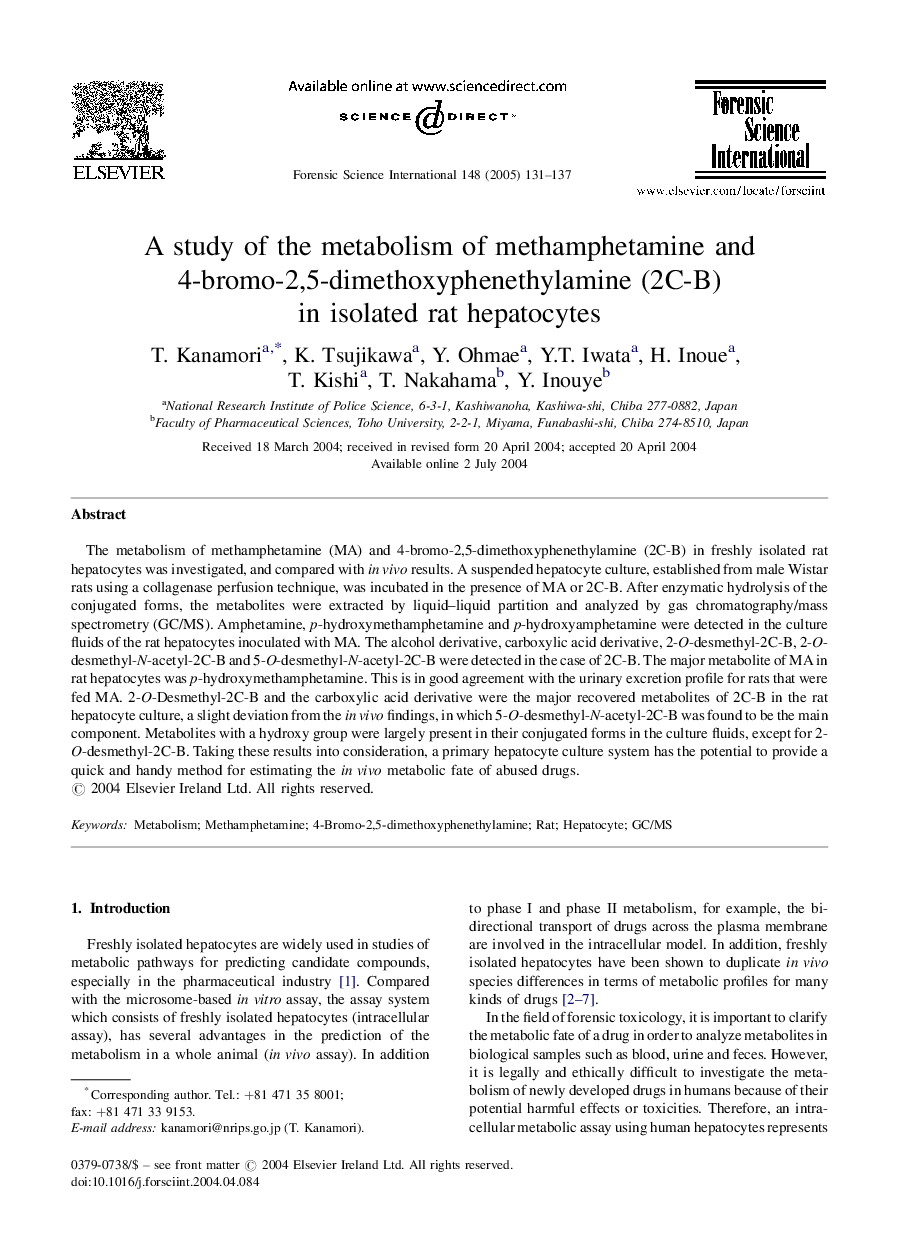| Article ID | Journal | Published Year | Pages | File Type |
|---|---|---|---|---|
| 9622611 | Forensic Science International | 2005 | 7 Pages |
Abstract
The metabolism of methamphetamine (MA) and 4-bromo-2,5-dimethoxyphenethylamine (2C-B) in freshly isolated rat hepatocytes was investigated, and compared with in vivo results. A suspended hepatocyte culture, established from male Wistar rats using a collagenase perfusion technique, was incubated in the presence of MA or 2C-B. After enzymatic hydrolysis of the conjugated forms, the metabolites were extracted by liquid-liquid partition and analyzed by gas chromatography/mass spectrometry (GC/MS). Amphetamine, p-hydroxymethamphetamine and p-hydroxyamphetamine were detected in the culture fluids of the rat hepatocytes inoculated with MA. The alcohol derivative, carboxylic acid derivative, 2-O-desmethyl-2C-B, 2-O-desmethyl-N-acetyl-2C-B and 5-O-desmethyl-N-acetyl-2C-B were detected in the case of 2C-B. The major metabolite of MA in rat hepatocytes was p-hydroxymethamphetamine. This is in good agreement with the urinary excretion profile for rats that were fed MA. 2-O-Desmethyl-2C-B and the carboxylic acid derivative were the major recovered metabolites of 2C-B in the rat hepatocyte culture, a slight deviation from the in vivo findings, in which 5-O-desmethyl-N-acetyl-2C-B was found to be the main component. Metabolites with a hydroxy group were largely present in their conjugated forms in the culture fluids, except for 2-O-desmethyl-2C-B. Taking these results into consideration, a primary hepatocyte culture system has the potential to provide a quick and handy method for estimating the in vivo metabolic fate of abused drugs.
Related Topics
Physical Sciences and Engineering
Chemistry
Analytical Chemistry
Authors
T. Kanamori, K. Tsujikawa, Y. Ohmae, Y.T. Iwata, H. Inoue, T. Kishi, T. Nakahama, Y. Inouye,
